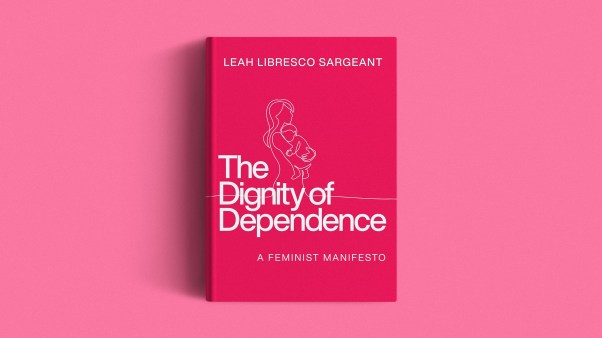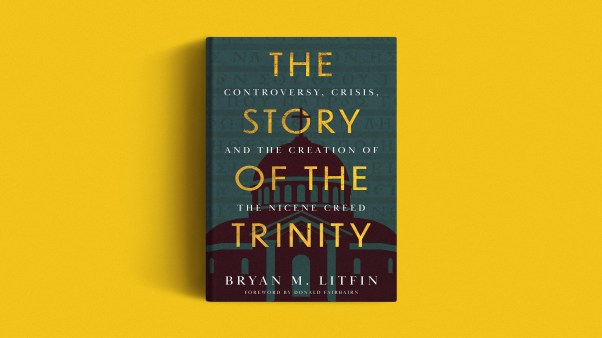The Today’s English Version of the New Testament, popularly known as Good News For Modern Man, has carved out an important niche for itself in the history of Bible translation. It has been widely acclaimed by scholars and lay people alike since its appearance ten years ago. Tens of millions of copies have been sold or distributed here and abroad. Its popularity is due not only to the overall fidelity of its translation of the Greek text but also to the felicity of its style and the clarity of its language.
Now the American Bible Society is to be commended and congratulated for the recent publication of the corresponding Old Testament. The combination of the two testaments will be marketed as the Good News Bible; hence we will here refer to this Old Testament as the GNB. (For now, this Bible is available only through the American Bible Society.)
The manner in which the ABS translating team went about its work is interesting. A member of the team would do a first-draft translation of an Old Testament book and circulate copies to the other members. After they read it and made suggestions, he would do a second draft. Then in a series of full committee sessions the team would discuss and modify the second draft. The results of that work would become the third draft, which would be circulated to a review panel, which consisted of members of the translations committee of the ABS board, a broad range of churchmen, and United Bible Societies colleagues overseas. The translating team would then make whatever adjustments it considered appropriate and submit the manuscript to the ABS board. In the final stage of the process, Eugene Nida, head of the ABS translations department, and two members of the board’s translation subcommittee would review the team’s work and incorporate their own conclusions into the final manuscript. Although the GNB Old Testament was funded by the United Bible Societies, the UBS asked the ABS to serve as trustee on its behalf.
The GNB Old Testament presents a generally pleasing appearance. Each book is prefaced by an introduction and an outline of contents. Headings and subheadings give a bird’s-eye view of major sections. References to extended parallel passages are often included in the subheadings themselves, while single-verse cross references appear in footnotes. Footnotes contain comments that are usually quite helpful (as at Exodus 13:8 on “Red Sea” and 25:7 on “ephod”); they are supplemented by a Word List elsewhere in the volume. Some of the footnotes, however, would have been more useful had they appeared earlier. The one on “the LORD,” for example, is not given until Exodus 6:3 (compare its embryonic form at 3:14) and perhaps reflects the historico-critical viewpoint of one or more of the translators. It would have been more pertinent and helpful to the average reader, it seems to me, at Genesis 2:7.
By and large, poetic sections of the Old Testament are printed in poetic format, usually with good (and sometimes downright lyrical) effect (for examples, see Genesis 2:23; Numbers 6:24–26; Isaiah 55:1 f.). Prose passages in poetic sections, especially in the prophetic canon, also generally read well (for instance, Jeremiah 18:18; 31:31–34). But when allegory is interpreted in the text itself (as in Ecclesiastes 12:1–7), even in the admirable interest of clarity, the reader may feel cheated out of his right to come to his own conclusions. Sometimes the poetry has a strangely clipped style (as in Psalm 100) or descends to the level of doggerel (see Samson’s statement in Judges 14:18). And when lyrical prose bordering on poetry is rendered as ordinary prose, the results can be dull indeed (e.g., Genesis 1:27). In fact, the criteria used for distinguishing between poetry and prose are not immediately evident. The book of Proverbs, printed as poetry by most modern versions (RSV, for example), is given as poetry only in chapter 8 and in 30:1–4 in the GNB.
Other features of format that enhance the appearance and usefulness of this translation are the line drawings (already familiar to readers of the GNB New Testament) and maps included in some editions; lists of names set in tabular arrangement (see First Kings 4:1–19), though again, not consistently (1 Chron. 1–9); and the use of italics for certain purposes (for example, to indicate source materials used or referred to by authors of Old Testament books, as in Second Kings 8:23).
As might be expected, the translators everywhere show their awareness of the great advances made in Old Testament scholarship in recent years. By rendering the traditional “that” as “how” in Genesis 6:5, they have correctly highlighted the sinfulness of the people who lived before the flood. “Couldn’t” in Genesis 19:11 and “Make way!” in 41:43 are surely right, while “lovely” and “weak,” two viable options for a word in 29:17, are both preserved, one in the text and the other in a footnote. At Second Kings 17:4 the footnote reading is preferable to the text; the situation is more debatable at Ezekiel 14:14 (where, incidentally, the footnote will only confuse the average Bible student familiar with the Old Testament Daniel). “Palaces decorated with ivory” in Psalm 45:8 is right on target. And the relation (however near or remote, and in whatever direction) between Proverbs 22:17–24:22 and the thirty-proverb schema of the Egyptian Wisdom of Amenemope is accented by the GNB’s unfootnoted “thirty” in Proverbs 22:20 and the numbered subheadings throughout the rest of the section.
Is the GNB Old Testament a translation or a paraphrase? If by “paraphrase” we mean “à la Living Bible” and if by “translation” we mean “à la New American Standard Bible,” the answer is, “Neither.” It would seem that the GNB translation team followed rather closely the principles set forth by Eugene Nida in a number of works, primarily The Theory and Practice of Translation (1969), some of the main concepts of which were conveniently summarized in 1972 in the Journal of Biblical Literature (91/1, pp. 73–89).
To avoid the Scylla of literalism (“formal correspondence,” to use Nida’s term) and the Charybdis of paraphrase, Nida tacks carefully between the two in a ship named “Dynamic Equivalence.” According to Nida, formal correspondence and paraphrase are equally “bad,” while dynamic equivalence is “good” (Theory, p. 173). Dynamic equivalence occurs when a modern rendering produces the same (or an equivalent) effect in the mind and heart of a modern reader as the original text did in the mind and heart of an ancient reader. Writes Nida: “The ultimate test of a translation must be based upon three major factors: (1) the correctness with which the receptors understand the message of the original (that is to say, its ‘faithfulness to the original’ as determined by the extent to which people really comprehend the meaning), (2) the ease of comprehension, and (3) the involvement a person experiences as the result of the adequacy of the form of the translation. Perhaps no better compliment could come to a translator than to have someone say, ‘I never knew before that God spoke my language’ ” (Theory, p. 173).
When used by a translator with the skills and perception of Eugene Nida, dynamic equivalence as an overriding translational principle can be quite helpful. But when ordinary, workaday translators (however well trained in technique) like me, or (dare I say it?) like the GNB Old Testament translating team, attempt to use the principle of dynamic equivalence in a thoroughgoing way, the results can be decidedly mixed. The pitfalls are legion.
Here are a few examples from Genesis 1. “The heavens and the earth” (1:1) is rendered “the universe.” Not bad, you say. Perhaps—but maybe for some readers “universe” would (a) overstate what the text intends to say, (b) lead to the assumption that people in ancient times conceived of infinite space in the same way that most people do today, or (c) cause them to miss the literary beauty or catchword significance (1:2, after all, begins with “the earth”) of the more literal translation. In the light of such problems, is “the universe” really a better rendering than “the heavens and the earth”?
In 1:2, “darkness was upon the face of the deep” is translated as follows: “The raging ocean that covered everything was engulfed in total darkness.” Not bad. you say again. Perhaps—but are the extra flourishes (“raging,” “engulfed,” “total”) a genuine improvement over the more traditional rendering? I hold no brief for word-for-word translation, and I agree completely with Nida and other translators that we have far too long emphasized the grammar and syntax and idioms of source languages to the virtual neglect of the grammar and syntax and idioms of target languages. I suppose my main quarrel with an overstress on dynamic equivalence is that it leans far more toward paraphrase than toward formal correspondence.
It also tends to make explicit what may be intentionally implicit in the text. In Genesis 1:16, for example, the GNB renders “greater light” and “lesser light” as “sun” and “moon.” Nothing wrong with that, you say; it’s more clear than the traditional rendering. Quite so—and that’s the problem. The translator must always ask, “Why did the writer use this particular form of expression rather than another? Was he trying to be obscure, or quaint, or clever, or what?”
In this case, many commentators believe that the author of Genesis 1 deliberately avoided using “sun” and “moon” because those luminaries were universally worshiped by ancient pagans. “Sun” and “moon” could therefore be misunderstood as proper names for deities, and so Genesis 1 calls them “greater light” and “lesser light” to remind its readers that the sun and moon, far from being gods themselves, are inanimate objects created by the one true God. If it be objected that very few modern readers would catch subtleties of that kind, I would of course agree. On the other hand, the more perceptive reader may wonder why “greater light” and “lesser light” were used by the author, turn to a commentary or two, and increase his overall understanding of the purpose and meaning of the passage. Furthermore, “greater light” and “lesser light” are not uncommunicative terms (what else could they be but sun and moon in this context?), and I for one would rather restrain my natural impulse to be overly clear in translation than run the risk of blowing an author’s polemic cover.
Because there is no such thing as one-to-one lexical, grammatical, syntactical, or idiomatic correspondence between any two given languages, no translation is perfect; translators constantly find themselves resorting to agonizing compromise. The GNB has broken fresh ground for us in this regard in the crux interpretum of 1:2, “the Spirit of God,” which it has rendered “the power of God” and footnoted “or the spirit of God; or a wind from God; or an awesome wind.” “Power of God” is a thoughtful and commendable way of solving a difficult problem and preserving the ambiguity that many have seen in this verse. The GNB does not always translate “spirit” as “power,” of course (see, for example, Judges 3:10; Psalm 51:11).
A final word about dynamic equivalence. If one of its purposes is to reproduce in the modern reader the same kind of emotional response that the ancient reader is assumed to have had, I don’t see how a measure of vulgarity can be avoided in certain instances (contra Nida, Theory, page 29). The GNB has not been entirely successful in this regard (see First Samuel 20:30).
But perhaps we have already said enough about the difficulties of achieving the admirable goals of dynamic equivalence, especially when it veers off sharply in the direction of paraphrase. How has the GNB Old Testament fared in the area of interpretation?
Quite well, by and large. “Ritually clean” (Gen. 7:2), “sacred tree(s)” (12:6; 18:1), “unfaithful” (Hos. 1:2), and a host of other felicitous renderings are cases in point. At times, however, the GNB forecloses on interpretive options, often without footnoting the alternatives: “Spain” and “Rhodes” (Gen. 10:4), “innocent children” (Jon. 4:11), “commits adultery, takes a bath” (Prov. 30:20), “the first person” (Judg. 11:31), and so forth. On the other hand, another fine example of how the ambiguity of a text can be preserved in translation is in Psalm 23:6, “and your house will be my home as long as I live.”
Whether because of publication deadlines or for some other reason, the GNB Old Testament suffers from certain inexplicable (at least to me!) inconsistencies. Why should “tree that gives life” in Genesis 2:9 become “tree of life” in 3:22, 24, especially since “[tree that gives knowledge of] what is good and what is bad” is so rendered throughout the account (2:9, 17; 3:4, 22)? Why “a hundred and fifty days” in 7:24 but “150 days” three verses later? Why “that” in 12:1 and “which” in 18:21? Why “who made” in 14:19 but “Maker of” three verses later? Why “because” in Exodus 20:7 but “for” in the exact parallel in Deuteronomy 5:11? Similar examples abound, and I get the impression that such differences are due less to a desire for elegant variation than to pressures leading to editorial haste.
Although unable to break free from traditional renderings entirely (e.g., “outward appearance,” First Samuel 16:7; “give you peace,” Numbers 6:26), the GNB Old Testament has abandoned many terms and phrases it considered archaic or hard to understand. For example, Noah’s “ark” has become a “boat” (Gen. 6:14), while the “ark of the covenant” is now the “Covenant Box.” “Leprosy” is “dreaded skin disease” or “mildew” (Lev. 13–15) depending on whether human beings or inanimate objects are affected (at Leviticus 13:47 a helpful footnote indicates that the same Hebrew word means both “dreaded skin disease” and “mildew”). “Be strong and of good courage” (Josh. 1:6, 9) is now “Be determined and confident.” If a hallowed sermon title has been lost because of this last change, never fear: the “Preacher” of Ecclesiastes is now “the Philosopher” anyway!
The way in which the GNB Old Testament handles matters of introduction and theology (including Old Testament-New Testament interrelations), while basically conservative, will not please all evangelicals. Genesis 37:28 makes explicit the fact that it was “the brothers” of Joseph who pulled him out of the cistern and sold him to the Ishmaelites (in conformity with Acts 7:9). In Isaiah 7:14, however, “young woman” appears in the text, and a footnote explains why, in the translators’ opinion, Matthew 1:23 used “virgin” in quoting from the Isaiah passage (for an excellent and judicious treatment of this matter, see Herbert M. Wolf’s article in JBL 91/4 [1972], pages 449–56). Psalm 2:12 offers a conjectural reading and relegates “Kiss the Son” to a footnote, where we are told that the Hebrew text is unclear. Genesis 49:10 is capably handled in the text, although the reading “Shiloh” should have at least been mentioned in the footnote. The rendering of Job 19:25, while abandoning the traditional “Redeemer” rendering, gets the general sense across in the following paraphrase: “I know there is someone in heaven/who will come at last to my defense.” Footnotes at Job 24:18 and 27:13 tell us that although Zophar is not named in the text, the speeches that begin at those points are “usually” assigned to him (see a similar footnote at 26:5). What we are not told is who those assigners are or why “usually” was chosen over “sometimes” (a more circumspect word). Chapters 40–55 of Isaiah are pronounced exilic in the introduction to that book.
In sum, then, the GNB Old Testament is a mélange of good and bad qualities, of traditional and non-traditional characteristics, of brilliant and less-than-brilliant renderings, of conservative and not-so-conservative theology. It bears the stamp of seasoned experts (like Robert Bratcher and Eugene Nida) as well as of lesser-known translators and stylists. If my critique of it seems unduly harsh, perhaps it’s because I have chosen to point out what I consider to be its faults rather than to rehearse its obvious virtues. Above all, I fully recognize how much I as a translator (and reviewer!) need to strive for that gracious humility and generous openness so beautifully exemplified to me personally by Nida and his co-workers (see also Nida, Theory, page 186).
The real question, however, is whether the Good News Bible has that delicate balance of accuracy, clarity, dignity, and maturity required to make it a seminal or dominant version in our “golden age” of Bible translation. And only time can answer that one.
Paul D. Steeves is assistant professor of history and director of Russian studies at Stetson University in Deland, Florida. He has the Ph.D. from the University of Kansas and specializes in modern Russian history.










